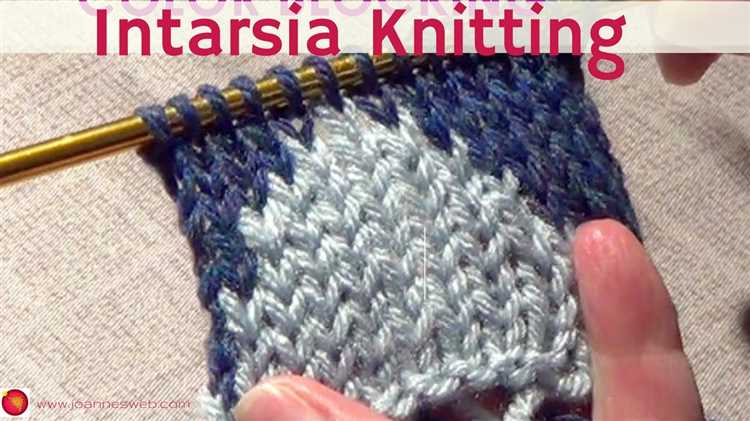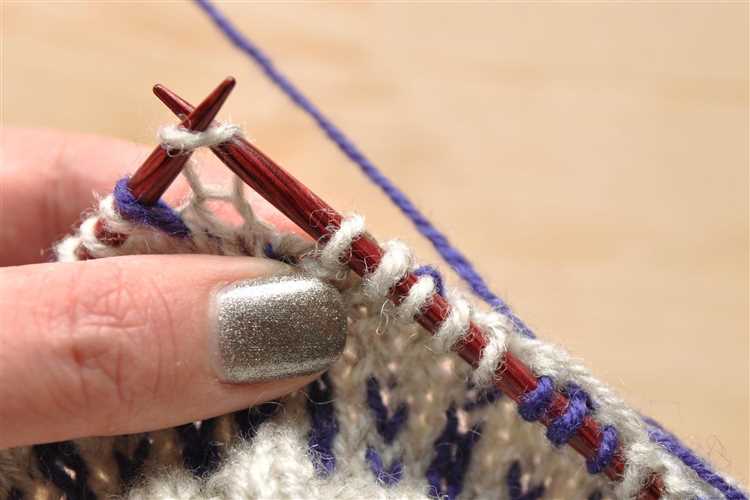Changing the color of yarn while knitting can add depth and visual interest to your projects. Whether you’re creating intricate patterns or simply adding a pop of color, knowing how to seamlessly transition from one shade to another is a valuable skill for any knitter. In this article, we’ll explore expert tips and techniques for successfully changing yarn colors in your knitting projects.
Planning your color changes: Before you begin knitting, it’s important to have a plan for when and how you’ll change colors. Consider the pattern you’re working with and where you want the color changes to occur. Some knitters prefer to change colors at the beginning or end of a row, while others opt for changing colors in the middle of a row to create color blocks or stripes. Take time to think about the overall design and desired effect of your project.
Preparing your yarn: When changing colors, it’s crucial to prepare your yarn in advance. One technique is to cut your current color yarn, leaving a tail of about 6 inches. Then, tie the new color yarn to the end of the old color yarn using a secure knot. Alternatively, you can simply start knitting with the new color, leaving a long enough tail to weave in later. Experiment with different methods and choose the one that works best for you and your project.
Expert tip: When changing colors, make sure to carry the unused yarn up the side of your work to avoid creating unnecessary bulk.
Executing the color change: When the time comes to make the color change, follow these steps for a smooth transition. First, drop the old color yarn and begin knitting with the new color yarn. Leave a small tail of the old color to weave in later. As you knit the first few stitches with the new color, gently tug on both yarns to secure the color change and prevent any gaps or loose stitches. Continue knitting in the new color until you reach the next color change point.
By following these expert tips and practicing different techniques, you’ll soon become adept at changing the color of yarn while knitting. Embrace the creative possibilities and let your imagination run wild with vibrant color combinations. Happy knitting!
The Importance of Yarn Color in Knitting
When it comes to knitting, the choice of yarn color is more than just a matter of personal preference. The color of the yarn can greatly impact the finished product and affect the overall look and feel of a knitted item. Here are a few reasons why yarn color is important in knitting:
- Enhances the Design: Yarn color can bring out the best in a knitting pattern or design. The right color can highlight the stitchwork and make the details pop, while the wrong color choice may hide the intricate details or make a design look messy.
- Creates Mood and Atmosphere: Yarn color has the ability to evoke different emotions and set the tone of a knitted item. Bright and vibrant colors can create a cheerful and lively atmosphere, while deep and muted tones may give a sense of sophistication and elegance.
- Complements Skin Tone: Selecting the right yarn color can also enhance one’s natural beauty. Different yarn colors complement different skin tones, and choosing the right color can make a knitted item look flattering when worn.
- Expresses Personal Style: Yarn color is a versatile tool that allows knitters to express their personal style and creativity. By choosing unique and interesting yarn colors, knitters can create one-of-a-kind items that reflect their individuality.
- Tells a Story: Yarn color can also be used to tell a story or convey a message. Some knitters choose specific colors to represent a cause or symbolize certain emotions or experiences.
Overall, the color of yarn plays a crucial role in the art of knitting. It can elevate a design, set a specific mood, enhance natural beauty, and let knitters express their own style and creativity. So next time you embark on a knitting project, take some time to carefully consider the color of yarn you choose, as it can make all the difference in the finished piece.
Different Ways to Change Yarn Color
When knitting, changing yarn color can add interest and variety to your project. There are several different techniques you can use to change yarn color. Here are some popular methods:
- Joining a new color at the beginning of a row or round: This is the simplest method and is commonly used in stripe patterns. Start knitting with the new color by simply beginning the row or round with the new yarn.
- Intarsia: Intarsia is a technique used to knit color blocks or images by using separate balls of yarn for each color section. To change colors, drop the old yarn, pick up the new yarn, and start knitting with it. When you change colors on the wrong side of the work, twist the old and new yarns together to prevent holes.
- Fair Isle: Fair Isle knitting, also known as stranded knitting, involves carrying two or more yarn colors across the back of the work. To change colors, drop the old color and pick up the new color from beneath the old color to prevent holes. It’s important to tension the unused color(s) so that they are carried loosely to avoid puckering.
- Slip Stitch Technique: This technique is commonly used for colorwork patterns that create a textured look. Instead of changing colors, you slip stitches with the new color, which creates a contrast effect. You can alternate colors in each row or create specific patterns using this technique.
Each technique has its own advantages and is suitable for different patterns and designs. Experiment with different methods to find the one that suits your project best. Practice is key to achieving smooth and neat color changes, so don’t be afraid to try different techniques and see what works for you!
Tips for Choosing Complementary Colors
When changing the color of yarn in your knitting project, it is important to choose complementary colors that work well together. Here are some tips to help you make the right color choices.
- Consider the color wheel: The color wheel is a helpful tool for understanding color relationships. Complementary colors are opposite each other on the color wheel, such as red and green, or blue and orange. Choosing complementary colors can create a harmonious and balanced look.
- Think about contrast: Selecting colors with high contrast can make your knitted project stand out. For example, pairing a light color with a dark color, or a warm color with a cool color. This contrast can draw attention to different areas of your design.
- Play with shades and tones: Using different shades and tones of the same color can create a subtle and sophisticated effect. For instance, combining a light blue with a dark blue, or a pastel pink with a deep rose. This creates depth and interest in your knitting project.
- Consider the intended mood: Different colors evoke different emotions and moods. Warm colors like red, orange, and yellow can create a cozy and energetic feeling. Cool colors like blue, green, and purple can create a calm and soothing atmosphere. Consider the mood you want to convey with your knitting project and choose colors accordingly.
- Experiment and have fun: Don’t be afraid to experiment with different color combinations and trust your instincts. Sometimes unexpected color pairings can turn out to be the most striking. Have fun and let your creativity guide you in choosing complementary colors for your knitting projects.
By keeping these tips in mind, you can confidently choose complementary colors for your knitting projects, creating beautiful and visually appealing designs.
Planning Your Knitting Project with Color Changes
When starting a knitting project that involves color changes, it’s important to have a plan in place. Proper planning can help ensure that your color changes are seamless and create the desired effect. Here are some tips to help you plan your knitting project with color changes:
- Choose your color palette: Start by selecting the colors you want to use in your project. Consider the overall look and feel you want to achieve and choose colors that complement each other. You can use a color wheel or color theory to guide your selection.
- Decide on the pattern and design: Determine the pattern or design you want to create with the color changes. This could be stripes, color blocks, or intricate colorwork patterns. Take into account how the colors will be distributed in the design.
- Map out your color changes: Create a chart or a written plan that outlines where each color change will occur in your project. This will help you visualize the flow of colors and ensure that you don’t miss any transitions.
- Consider the stitch pattern: Take into consideration the stitch pattern you will be using in your project. Some stitch patterns may require specific techniques for color changes, such as intarsia or fair isle. Make sure you are familiar with the techniques required for your chosen stitch pattern.
- Swatch and test your color changes: Before starting your main project, it’s always a good idea to swatch and test your color changes. This will give you an opportunity to see how the colors interact, whether you like the effect, and make any necessary adjustments.
By planning your knitting project with color changes, you can ensure that your finished piece looks exactly as you envision. Experiment with different color combinations and techniques to create unique and stunning knitted items.
Techniques for Changing Yarn Color
Changing yarn color while knitting can add beautiful color variations and patterns to your project. Here are some techniques you can use to change yarn color:
- Joining a new color: To begin working with a new color of yarn, simply drop the old color and start knitting with the new color. Leave a tail of the old yarn that is long enough to weave in later.
- Stripes: To create stripes, alternate between two different colors of yarn. When changing colors, leave a tail of the old color and carry it up the side of your work. This will prevent you from having to weave in multiple ends later.
- Intarsia: Intarsia is a technique used to knit blocks of color separately. When working with a new color, simply drop the old color and start knitting with the new color. When you return to the old color, drop the new color and pick up the old color again.
- Fair Isle: Fair Isle is a technique where you carry multiple colors of yarn across the back of your work to create intricate patterns. When changing colors, twist the two colors of yarn together at the back of your work to prevent gaps.
Remember to always weave in your yarn ends neatly to ensure a clean finish. You can use a tapestry needle to weave the tails of your yarn through the stitches on the wrong side of your work.
Experiment with different color combinations and techniques to create unique and vibrant projects. Changing yarn color can bring new life to your knitting projects and enhance their visual appeal.
Troubleshooting Common Issues with Yarn Color Changes
Changing the color of yarn while knitting can add beautiful patterns and designs to your project. However, it can also be tricky and lead to some common issues. Here are some troubleshooting tips to help you overcome these challenges:
- Tangled Yarn: When switching between yarn colors, tangles can occur. To prevent this, make sure to securely fasten off the previous color and keep the new color yarn free from tangles.
- Uneven Tension: It is common to have uneven tension when changing yarn colors. To avoid this, make sure to pull the working yarn tightly when switching colors and maintain even tension throughout your knitting.
- Visible Knots: Knots can sometimes be visible when changing yarn colors, especially if the knots are large. To minimize their appearance, tie smaller, discreet knots and bury them within your stitches.
- Color Bleeding: Some yarns may bleed or transfer color when washed or blocked. To prevent color bleeding, wash your project separately or with like colors before wearing or gifting.
- Inconsistent Yarn Thickness: Yarns from different dye lots or brands may vary in thickness, causing an inconsistent look. To address this issue, consider alternating between two different skeins of yarn every few rows to blend the color changes more smoothly.
- Visible Line or Gap: A visible line or gap can appear when changing yarn colors, especially if the tension is not consistent. To make the color change less noticeable, try using the “jogless stripe” technique or incorporating it into your pattern design.
Remember, practice makes perfect, and with time and experience, you will become more skilled at changing yarn colors seamlessly. Don’t be afraid to experiment and try new techniques to achieve the desired effect in your knitting projects.
Expert Tips for Perfect Yarn Color Transitions
When knitting with multiple colors of yarn, achieving smooth and seamless color transitions can be a challenge. Here are some expert tips to help you master this technique:
- Plan your color scheme: Before starting your project, decide on the colors you want to use and how they will transition. This will help you visualize the final result and ensure a cohesive design.
- Create a yarn bobbin: When working with two or more colors in a row, it is helpful to wind each color onto a separate yarn bobbin. This will prevent tangling and make it easier to manage the yarn.
- Use the Russian join: For a seamless color transition, try using the Russian join method to join a new ball of yarn. This involves unraveling the plies of both yarns, overlapping them, and then twisting them together. This technique eliminates the need for knots and creates a smooth and invisible transition.
- Apply the slip stitch: When transitioning between colors, you can use a slip stitch to carry the yarn not in use along the side of your work. This technique reduces the number of ends to weave in later and creates a neat edge.
- Introduce the new color gradually: To ensure a gradual and smooth transition between colors, introduce the new color a few stitches before it is needed. This will help blend the colors together and avoid abrupt color changes.
- Alternate strands for fair isle knitting: When working on fair isle knitting projects, where multiple colors are used in the same row, it is beneficial to alternate strands of the colors every few stitches. This technique helps to distribute the tension evenly and creates a more even fabric.
- Block your work: Once you have completed your project, don’t forget to block it. Blocking will even out the stitches and help the colors blend together seamlessly.
- Practice and experiment: Achieving perfect color transitions takes practice, so don’t be afraid to experiment with different techniques and yarn combinations. Each project is a learning opportunity, and with time, you will develop your own preferred methods.
By following these expert tips, you’ll be well on your way to creating beautiful and flawless yarn color transitions in your knitting projects. Have fun and enjoy the process!
FAQ:
What are some expert tips for changing the color of yarn when knitting?
Some expert tips for changing the color of yarn when knitting are to make sure your tension remains consistent, weave in the tail ends of the yarn neatly, and choose colors that complement each other.
How do I change the color of yarn when knitting?
To change the color of yarn when knitting, you can simply start working with the new color, leaving a tail of the old color that you will later weave in. You can also use a technique called the “intarsia” method, where you twist the old and new colors around each other to ensure there are no gaps.
Is it difficult to change the color of yarn when knitting?
Changing the color of yarn when knitting can be a bit tricky at first, but with some practice and patience, it becomes easier. Just make sure to keep your tension consistent and take your time to weave in the tail ends neatly.
Can I change the color of yarn in the middle of a knitting project?
Yes, you can change the color of yarn in the middle of a knitting project. The best time to do this is at the beginning or end of a row, as it will be easier to weave in the tail ends of the yarn neatly.
What types of yarn are best for changing colors in knitting?
When changing colors in knitting, it is best to choose yarns that have a similar weight and fiber content. This will ensure that the tension remains consistent and the colors blend well together. It is also important to choose colors that complement each other to create visually pleasing designs.
Are there any techniques to prevent gaps when changing colors in knitting?
Yes, there are techniques to prevent gaps when changing colors in knitting. One technique is to twist the old and new colors around each other when changing colors. Another technique is to use the intarsia method, where you use separate balls of yarn for each section of color to ensure there are no gaps.
What should I do with the tail ends of yarn when changing colors in knitting?
When changing colors in knitting, it is important to weave in the tail ends of the yarn neatly. This can be done by threading the tail end through the stitches on the wrong side of the work using a yarn needle. Make sure to weave in the tail ends securely to prevent them from unraveling.


